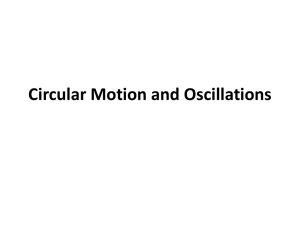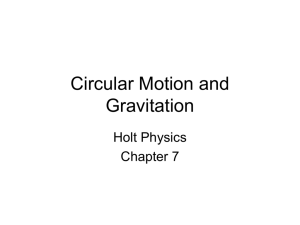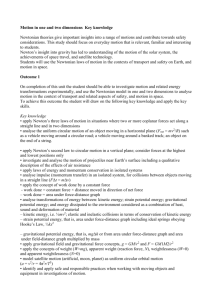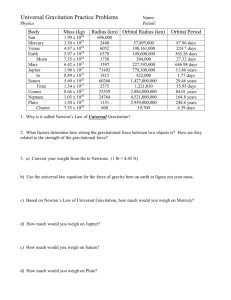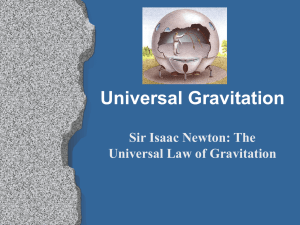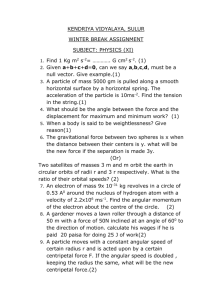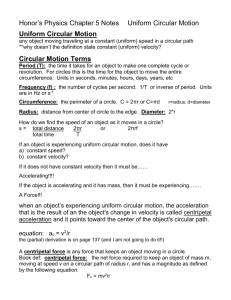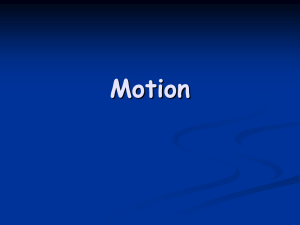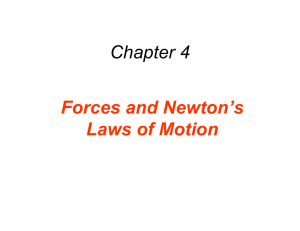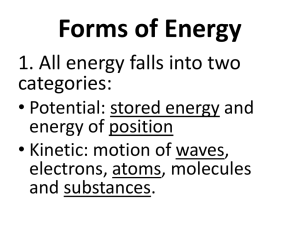Centripetal Force & Newton`s Universal Law of
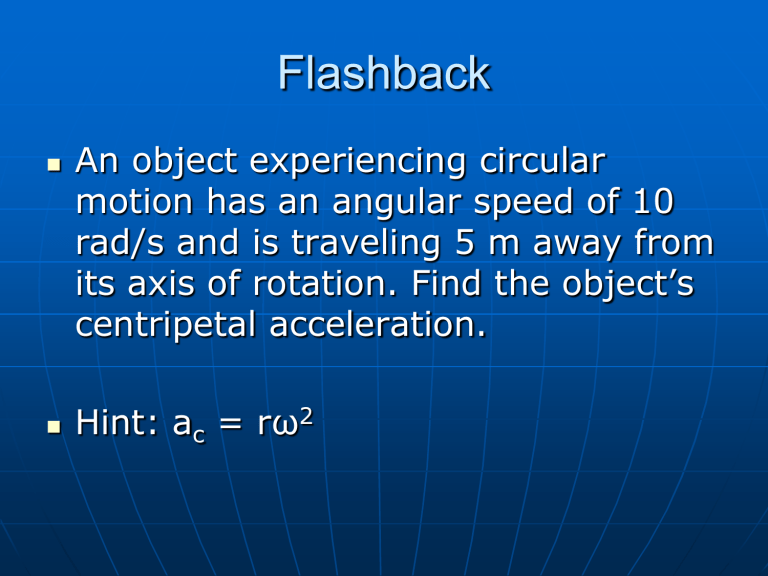
Flashback
An object experiencing circular motion has an angular speed of 10 rad/s and is traveling 5 m away from its axis of rotation. Find the object’s centripetal acceleration.
Hint: a c
= rω 2
Announcements
Units & Symbols Quiz on Wednesday
Circular Motion Quiz on Thursday
My contact information:
• Email: david.mccallister@thomasmore.edu
• Cell: 859 466 6402
Centripetal Force &
Newton’s Universal Law of Gravitation
Circular Motion
Physics
Mr. McCallister
Recall:
a c a c
= v t
2
= rω
/r
2
Newton’s Second Law: F = ma
Centripetal Force
Centripetal Force is the force responsible for circular motion
• Symbol: F c
• Unit: N
Recall: F = ma
F c
F c
= mv t
2
= mrω 2
/r
Centripetal Force
Centripetal force is not a new kind of force.
It is the name given to any kind of force responsible for keeping an object in circular motion.
• Ex: Car turning = friction is F c
David’s sling = tension is F c
Practice 7H p 261 #2-4
#1
• A girl sits in a tire that is attached to an overhanging tree limb by a rope 2.10 m in length. The girl’s father pushes her to a tangential speed of 2.50 m/s. If the magnitude of the force that maintains her circular motion is 88.0 N, what is the girl’s mass?
• Formula: F c
= mv t
2 /r
• Substitute: 88 = m(2.50) 2 / 2.10
• Solve: m = 29.6 kg
Fundamental forces
All forces, at their most basic fundamental level, are field forces!
• Ex: Atoms in hand repelling atoms in wall
All mass in the universe attracts all other mass in the universe with a gravitational force. The size of the force depends on:
• the amount of mass the objects have
• how far apart the objects are.
Gravitational Force
Gravitational force: an attractive force between all mass in the universe. The size of the force depends on:
• the amount of mass the objects have
• how far apart the objects are.
Symbol: F g
Unit: N
Newton’s Universal Law of
Gravitation
F g
= G m
• Where
1
m
2
/ r 2 m
1
& m
2 are masses in kg r is the distance the masses are separated in m. r is measured from the center of mass of large objects (ex: planet’s core)
G is the constant of universal gravitation
• 6.673 x 10 -11 N m 2 / kg 2
Stop to Think…
Compare the gravitational force on the moon from the earth to the gravitational force on the earth from the moon.
They are equal! (Newton’s Third
Law)
Calculating g.
Let m
1
= person’s mass, m
Earth’s mass
2
=
Recall weight = mass x g, where g =
9.81 m/s 2
So F
• mg = G m m
E
g
= mg and F
• g = G m
E
/ r
E
2
/ r g
E
2
= G m
The person’s mass cancels…
1 m
2
/ r 2
Calculating g.
g = G m
E
/ r
E
2
• m
E
• r
E
= 5.98 x 10 24
= 6.37 x 10 6 m kg
• G = 6.673 x 10 -11 N m 2 /kg 2
Substitute and Solve:
• g = 6.673 x 10 -11 x 5.98 x 10 24
(6.37 x 10 6 ) 2
• g = 9.83 m/s 2
Practice 7I pg 265 #2-4
#1
• If the mass of each ball in Sample
Problem 7I is 0.800 kg, at what distance between the balls will the gravitational force between the balls have the same magnitude as that in Sample Problem
7I? How does the change in mass affect the magnitude of the gravitational force?
Practice 7I pg 265 #2-4
#1
• Formula:
F g
= G m
1 m
2
• Substitution:
/ r 2
8.92 x 10 -11 = 6.673 x 10 -11 x (.8 x .8)/r 2
• Solve:
r = 0.692 m
Defying Gravity
Imagine a cannon on a tall mountain: v esc, Earth
= 11,200 m/s
Black Holes
In 1916, Karl Schwarzschild predicted an object so massive and dense that something travelling at even the speed of light near the dense object could not escape its gravity.
Black Holes
The radius at which light cannot escape the object’s gravity is called the Schwarzschild radius.
The physical space at the
Schwarzschild radius is called the event horizon.
The physical space inside the event horizon is called a black hole.
Gravitational Lensing
Massive objects can bend light, just like a lens.
Homework due Tomorrow:
By end of class tomorrow:
• p. 261 7H #2-4
• p. 265 7I #2-3
• p. 265 Section Review #1-5

